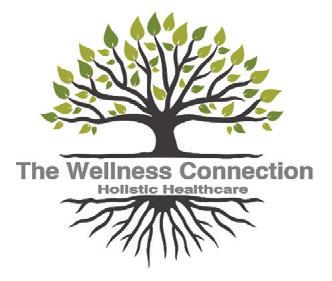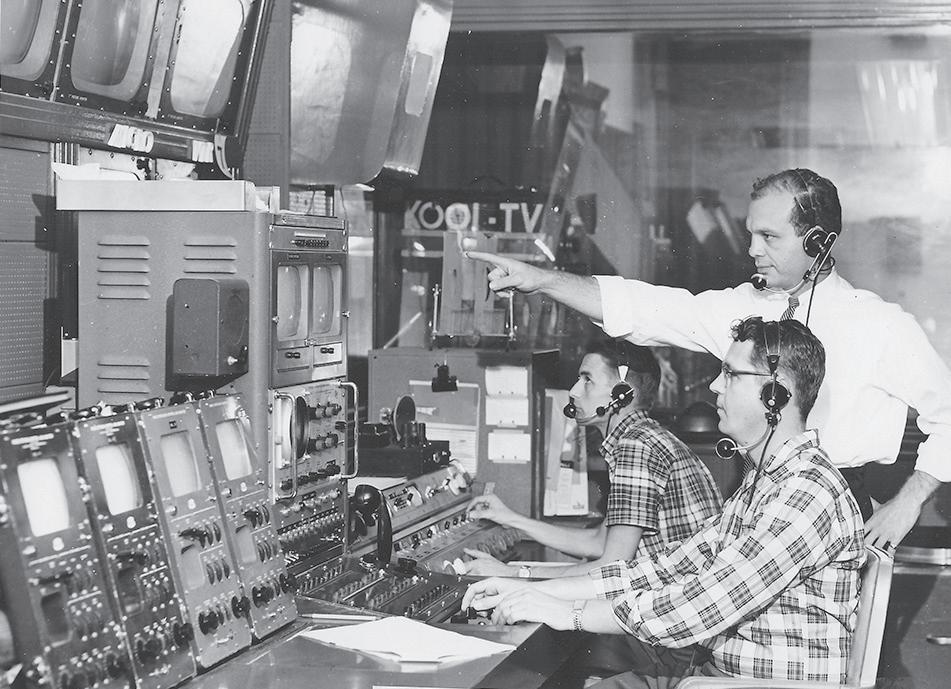
11 minute read
COMMUNITY
For more community news visit gilbertsunnews.com
GilbertSunNews.com | @GilbertSunNews /GilbertSunNews
HD SOUTH brings back radio’s yesteryear
BY SRIANTHI PERERA
GSN Contributor
Country singer Bonnie Owens is associated with Bakersfield, California, but her roots were in Gilbert. Her husband, country recording artist Buck Owens, grew up in Mesa, owned radio stations in the Valley for many decades and carved a niche in local broadcasting history. A new exhibit presented by Phoenix-based House of Broadcasting Inc. at HD SOUTH, Home of the Gilbert History Museum, includes photos of the Owenses and other country singers as well as their record album covers. It runs through Oct. 20. Thomas Mihalchick, board member of House of Broadcasting, called it the organization’s first traveling museum. Artifacts include photos of television and radio equipment and broadcasters dating to the 1950s; radios from the 1950s and a “space-age” transistor TV circa 1970; a film projector used by TV stations to show films before the invention of videotape; and electrical transcriptions, which are 16-inch vinyl records on which commercials and programs were recorded “direct to disc” before audiotape was invented.
“I think anyone with an interest in broadcasting, or anyone who is curious about broadcasting history would enjoy the show,” Mihalchick said. “In addition, any fan of traditional country music would enjoy the show.” Denise Lopez, CEO of HD SOUTH, said guests will appreciate the collection because the subject matter is uncommon to the East Valley.
House of Broadcasting has a collection of memorabilia from Cool TV/Radio and some items are part of an HD SOUTH exhibit. (Courtesy of House of Broadcasting.)
see BROADCAST page 17
SUV raffle funding hope for children with cancer
GSN NEWS STAFF
“If you have cancer, Children’s Cancer Network will always be there for you.” Ahwatukee fifth grader Jackson Dupps said this and much more last month when he and a dozen other pediatric cancer survivors and their families came together at the CCN’s offices in Chandler. The occasion for the get-together was a photo shoot of the cancer fighters and their siblings with a brand-new 2021 Toyota Highlander XLE, a donation from Valley Toyota Dealers to benefit Arizona families fighting a nightmare disease. CCN is raffling off the Highlander this month in hopes of raising $150,000 – money that will be used to serve local families. The raffle coincides with Childhood Cancer Awareness Month in September. “Words can’t express our gratitude to Valley Toyota Dealers and excitement about the opportunity to raffle a beautiful new Highlander,” said Patti Luttrell, executive director of CCN. “We also are so grateful to Jeff Noble Photo for donating beautiful photography and giving our kids a chance to step into the spotlight.” Jackson and his big brother, Ethan, smiled for the camera alongside cancer survivors and their siblings from across the Valley. Also in attendance were Jace Hyduchak and his little brother, Brig. Jackson and Jace are best friends and classmates at Monte Vista Elementary. Jace, too, is a cancer-survivor.
Jace Hyduchak, left, and Jackson Dupps, both 10, stand next to the car that will be given away in a raffle to benefit cancer survivors. (Pablo Robles/GSN Staff Photographer) see CANCER page 16
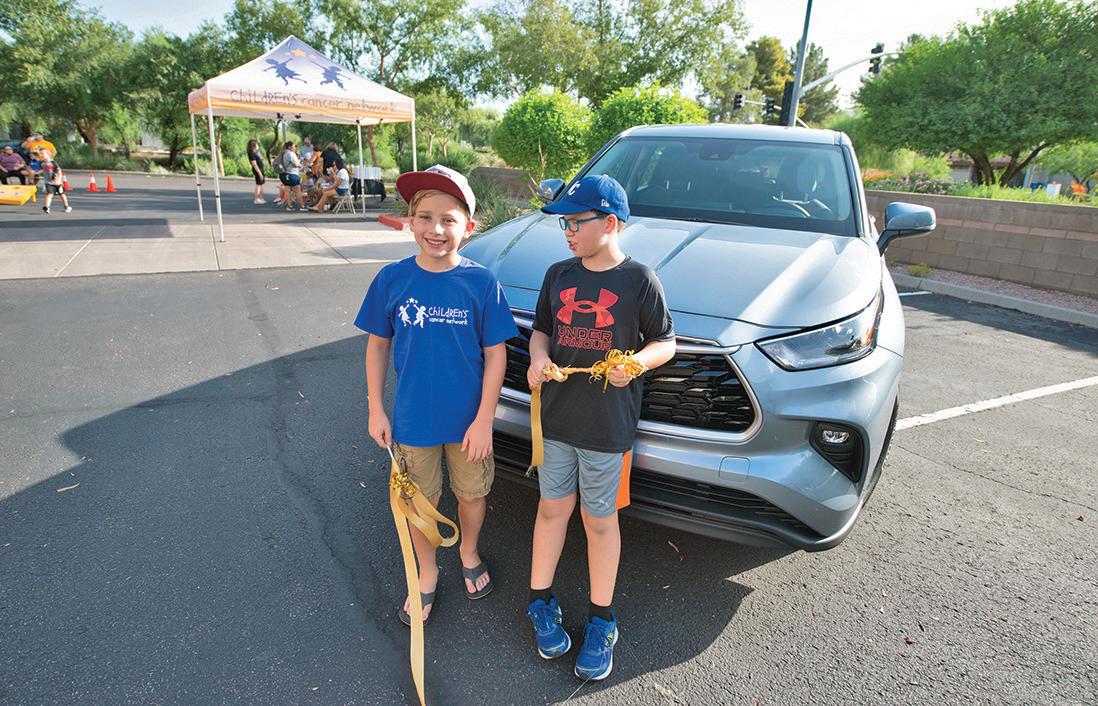
GILBERT SUN NEWS | SEPTEMBER 12, 2021
Heat topic of HD SOUTH speaker’s talk
BY ASHLYN ROBINETTE
GSN Contributor
Monsoons, haboobs and flash floods may be the most talked-about weather features of Phoenix recently, but there is another phenomenon happening in the Valley every day of the year – urban heat. “Heat is a silent threat,” Florian Schneider, an Arizona State University SHaDE Lab researcher, told a an audience at HD South recently. Schneider focuses on advancing research in and awareness of urban heat and mitigation. Heat islands are significantly warmer than surrounding rural areas. The urban heat island effect is an ongoing issue that could one day make Phoenix unlivable if it is not reduced, Schneider said.
Schneider discussed the causes and impacts of urban heat and what Arizona is doing to combat it. “It’s getting hotter and we need to find a way to cool down fast,” he said. Arizona temperatures and heat-related deaths and illnesses are increasing. Eventually, this extreme heat could make the Phoenix metropolitan area unlivable, he told the audience. Heat is the leading cause of weather-related mortality in the United States, according to data from the National Oceanic and Atmospheric Association. The Maricopa County Department of Public Health reported a record 323 heat-associated deaths last year, a 62.3 percent increase from 2019 and 15 times the total in 2001. Over half of those deaths were among people experiencing homelessness. “Heat is a killer,” Schneider said. Last year, Arizonans endured the hottest summer on record when Phoenix broke 18 daily heat records and tied another 15 times, according to the National Weather Service. In June, Phoenix broke another two heat records, according to the weather service. With temperatures regularly climbing into the triple digits, Arizona breaks heat record after record. Extreme heat dangers are expected to worsen in the coming years, based on scenarios of rising day and nighttime temperatures with climate change and the urban heat island effect. “We have to provide people with a way to live here,” Schneider said. “Not everyone has the privilege to move.” Vulnerable populations include homeless people, senior citizens, children, outdoor workers and people who live in mobile homes or without functioning air conditioning, Schneider said, adding that climate hazard vulnerability especially depends on income. The growing number of lives lost highlights an urgent need to amplify efforts to protect those most vulnerable and ensure livability for future generations. “Is it possible to live in this area by the end of the century considering climate change and urbanization?” Schneider asked. “We have to be creative, anticipate and help those who actually need it.” Urban heat mitigation is paramount for urban sustainability, he said. “There is no one-size-fits-all heat mitigation strategy because urban heat is not homogeneous,” Schneider said. Heat is experienced differently based on location, humidity and more. For this reason, heat mitigation should not be applied equally, instead only where necessary, Schneider said. “When heat mitigation is necessary, it should be applied in equitable and sustainable ways,” he added. Implementation of mitigation strategies is difficult due to costs, space and other factors. Future livability depends on water and energy use and the effectiveness of different heat mitigation methods, Schneider said. The majority of heat-related deaths are from exposure outdoors, so outdoor heat mitigation methods like cool pavement, which reduces the heat island effect by reflecting solar energy, and green infrastructure, which relies on nature-based solutions, are ideal. Gilbert sweeps over 40,000 miles of roadway each year, according to the Gilbert Public Works Department, so cool pavement may be Gilbert’s best solution, Schneider said. Schneider and other urban climate researchers have been studying the effectiveness of cool pavement on reducing surface temperature, air temperature and mean radiant temperature over time in several locations in Phoenix. Schneider was one of a number of speakers lined up this month at HD SOUTH. See hdsouth.org for details.
CANCER from page 15
“These boys have fought so hard and have come so far,” said Jackson and Ethan’s mom, Kelli Dupps. “Experiencing childhood cancer is something that changes you forever. These kids are our biggest teachers. They are a constant reminder of what is truly important and of what matters the most.” The raffle provides Arizonans a simple opportunity to make a difference for families facing a devastating diagnosis. Tickets are priced at $20 for one or $50 for three and are available for purchase at ccnwinacar2021.givesmart.com. CCN will sell a maximum of 8,000 tickets, and the winning ticket will be drawn on September 30. Proceeds from the raffle will be used to cover basic needs for Arizona families fighting pediatric cancer – things like gas and grocery gift cards. The American Childhood Cancer Organization notes that 60 percent of families in the United States battling cancer reported spending as much as $10,000 annually on non-medical expenses, including parking, meals away from home and childcare, during their child’s treatment. “CCN picks up where insurance leaves off,” Luttrell said. “Beyond the medical costs, there are so many expenses that people can’t possibly anticipate. A huge portion of the money we raise is used to help families with basic living expenses – such as gas, groceries and even beds.” Indeed, the nonprofit earmarks more than $150,000 each year to help families cover these costs. But CCN’s impact goes well beyond financial support. “CCN is an organization the supports the entire family unit. They work hard to create programs and activities that provide a little something for everyone,” added Kelli. The nonprofit serves as a primary point of contact for families facing cancer – at the hospital when they receive the diagnosis, throughout their cancer journey and into long-term survivorship. The organization provides hospital admission kits to help new families navigate the road ahead, adopt-a-family programs for the holidays and back-toschool season, mental health services for families, programs to help siblings cope with cancer, college scholarships, funding for childhood cancer research, advocacy, and a multitude of other services and resources. “I have been told there is nothing worse in life than losing a child,” said George Hyduchak. “Thankfully, our son Jace is a survivor, but I can tell you firsthand that families fighting childhood cancer face the prospect of that fear every single day.It’s the support of family, friends and community that help get us through it all.” “Partners like Valley Toyota Dealers make such a difference for families facing that fear,” said Luttrell. “During Childhood Cancer Awareness Month and beyond, our goal is to rally the larger community around the cause and ensure no one has to face cancer alone.” To learn more, visit childrenscancernetwork.org or facebook.com/childrenscancernetwork, or call 480-398-1564.
“As the center for arts, culture, and history, having this exhibit at HD SOUTH was a natural fit,” she said. “We constantly strive to bring new and exciting things to our residents and museum visitors. The items encompass history, some of which is specific to Gilbert, from a different perspective – the music and broadcasting industry.” Established in 1997, the House of Broadcasting holds Arizona’s largest private collection of broadcast memorabilia. The nonprofit is dedicated to educating the public and preserving and celebrating the history, personalities and paraphernalia of radio and television in Arizona. It is one of five museums in the country dedicated to the broadcast industry; the others are in Los Angeles, New York, Chicago, and Washington D. C. Lopez said the tie-in with Bonnie Campbell Owens provided cohesion between the two organizations that enabled them to make exhibit relevant to Gilbert.
Bonnie Owens was born in 1929 in Oklahoma during the Great Depression. Her family moved around to be away from the drought-stricken “Dust Bowl” and eventually migrated to Gilbert. Her father, Wallace Campbell, worked many jobs, including as an iceman and a carpenter at Williams Air Force Base. Wallace played many instruments, loved music and fostered the musical abilities of his children. Hence, Wallace was Bonnie’s first musical inspiration. She became so sure of her future career as a musician that she and her sister, Betty, dropped out of high school in the junior year. For health reasons, Wallace moved to the San Francisco area in 1949.
Bonnie stayed in Arizona because she had married up and coming musician Buck Owens. From age 15, Owens had his own music themed local radio show over a Mesa station and played gigs at several dancehalls in the area. They had two sons, Buddy Alan Owens in 1948 and Michael Owens in 1950. But it was a hardscrabble life and soon the marriage was in trouble. Bonnie moved to the Bakersfield area, where Buck’s aunt and uncle had offered to help take care of the boys. Buck followed soon after, with his parents in tow. Bonnie continued her musical career. Many years later, she married country star Merle Haggard. She died in 2006.
Buck Owens hit the high notes with his career. He had hits from the early 1960s and became a country music legend with 25 number one records. For 18 years, he co-hosted the TV show HeeHaw. In the Valley, Buck Owens owned radio stations KTUF/KNIX and KNIX AM/FM for 30 years. In addition to the Owens memorabilia, the House of Broadcasting collection includes a photo collection donated by Tom Chauncey, former owner of KOOL TV/Radio, with photos from the KPHO TV 5 collection and the KOY Radio (550 AM) collection. The museum also has radio and television equipment, station promotional items and TV and radio station rate cards. HD South often partners with other nonprofit organizations in its programming. “I am excited we are able to showcase a bit of Arizona’s largest private collection of broadcast memorabilia,” Lopez said. “Knowing they are dedicated to preserving the history of radio and television in Arizona is important and we’re thrilled to be a part of their story.”
Dr. John Craft, co-author of “Images of America - Phoenix Television,” will dis-

Photographic memorabilia and tools show broadcasting of the past, from an exhibit presented by House of Broadcasting. (Denise Lopez.)

cuss the history of Phoenix television and signing copies of the book “Phoenix Television” at the HD SOUTH Museum in Gilbert on Saturday, Sept. 18, from 10:30 a.m. to noon. Also, the House of Broadcasting display is available for public viewing.
Details: hdsouth.com and houseofbroadcasting.com
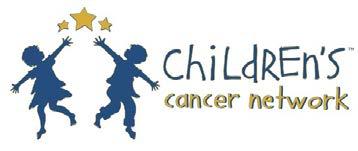
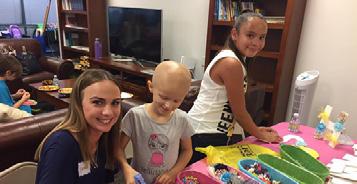
Vote For us Best Non-Profit In this year’s Best of the Best!
BESTOF 2021
150 W. Chandler Blvd., Suite 1 • Chandler, AZ 85226 Phone: 480-398-1564 • Email: info@childrenscancernetwork.org childrenscancernetwork.org
Children’s Cancer Network is a Qualified Charitable Organization for the Arizona Tax Credit. childrenscancernetwork.org
From our doorstep to yours
Quality medical care delivered to you
House-call medical services Same-day and wellness care Care of all ages Concierge and Fee-for-service plans www.TheWellnessConnection.group • 480.267.9802
